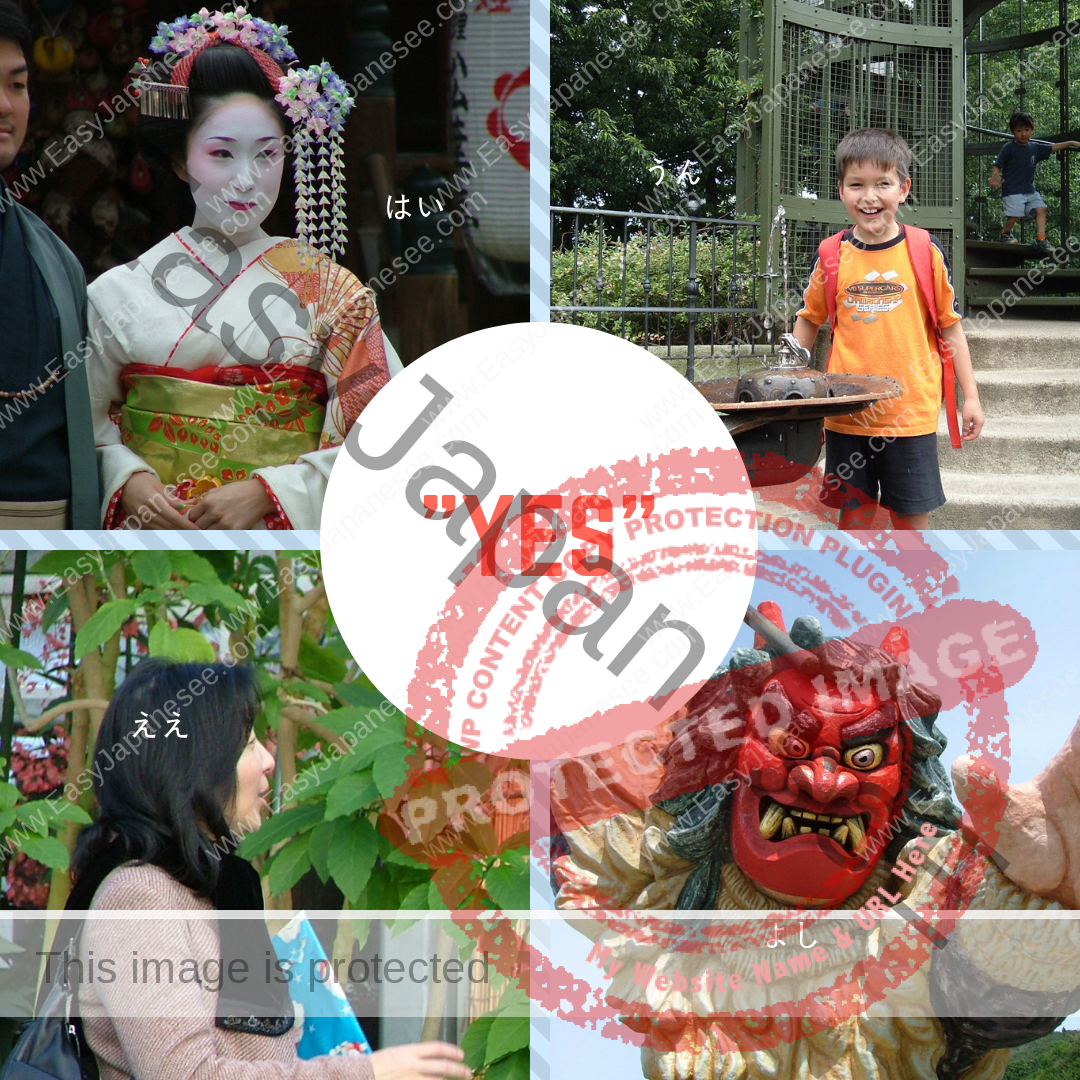
“Yes”
“Yes” is such a basic word, but there are a few variations.
はい – This is the most proper word, the safest option you should use as a learner of Japanese.
A: とうきょうがすきですか。
B: はい、すきです。
A: じゃあ、とうきょうにいきましょう。
B: はい、いきましょう。
B: はい、すきです。
A: じゃあ、とうきょうにいきましょう。
B: はい、いきましょう。
ええ – This is something in between はい and うん. It’s not bad, but it is casual though used with -です/-ます. Men say it too but probably women use this more often than men.
A: とうきょうがすきですか。
B: ええ、すきです。
A: じゃあ、とうきょうにいきましょう。
B: ええ、いきましょう。
うん – I don’t know how many times I was told “「うん」じゃないでしょ、「はい」でしょ! (It shouldn’t be “un” but “hai”!)” when I was a child. I believe this has been the case with anybody who has grown up or is growing up in Japan, but kids do say “うん” instead of “はい” and even adults, when they are talking with their friends in a casual way, they say “うん.” Because うん is only used in very casual conversations, it is very unlikely to be used in polite form sentences. As a learner, probably best not to use it, but if you hear it, you should know that that means “yes.”
A: アイスクリームすき?
B: うん、すき。
B: うん、すき。
A: じゃあ、アイスクリームたべよう。
B: うん、たべよう。
B: うん、たべよう。
よし – This is more like “OK” and often used by men in a plain volitional form sentence. I can’t think of any female friend who says よし instead of ええ, though.
A: アイスクリームたべよう。
B: よし、たべよう。

